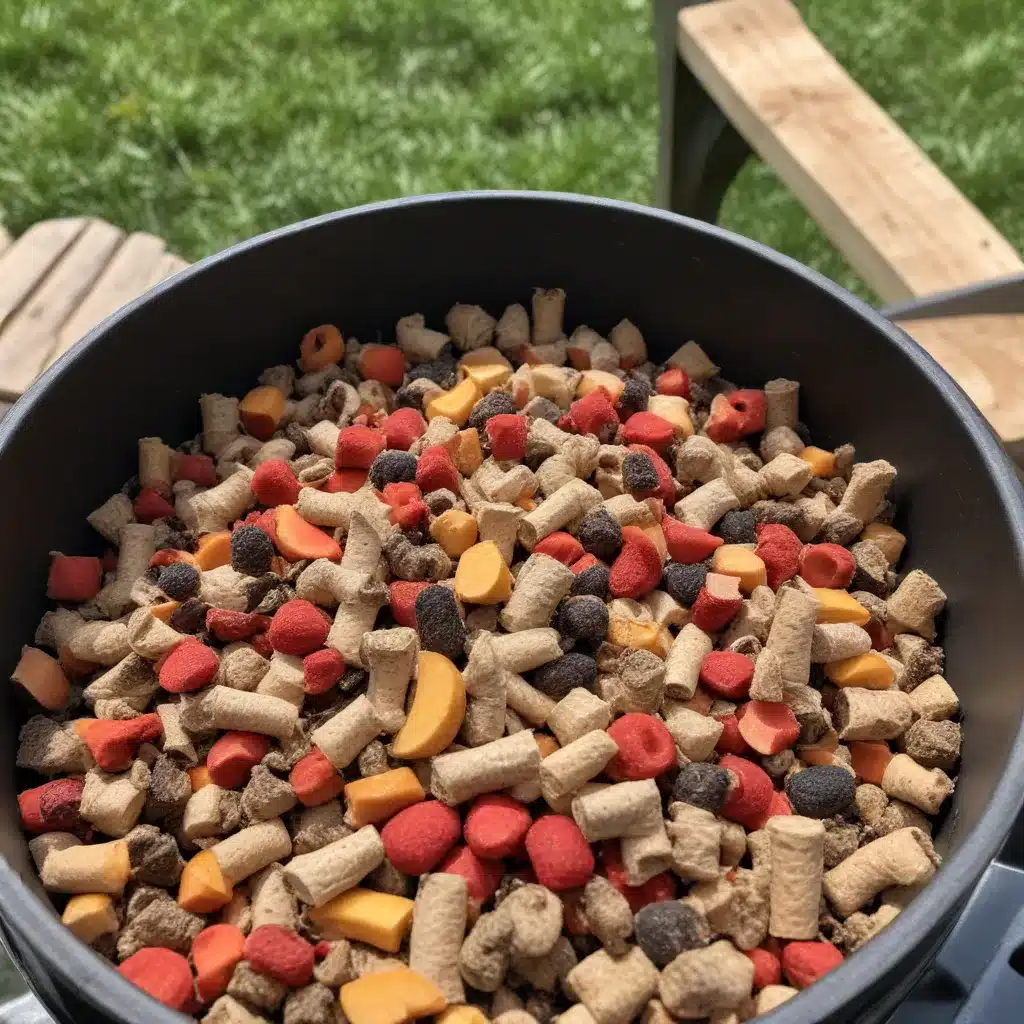
Unlocking the Secrets of Exceptional Bark
As an experienced barbecue pitmaster, I’ve spent countless hours honing my craft, experimenting with different techniques, and exploring the nuances of achieving the perfect bark. The quest for that elusive, mahogany-colored crust can be both exhilarating and humbling, as every cut of meat and every smoking session presents new challenges.
One of the most common questions I receive from fellow pitmasters and backyard barbecue enthusiasts is, “How can I get a better bark on my pellet smoker?” It’s a valid concern, as the sometimes-finicky nature of pellet smokers can make consistent bark formation a tricky proposition. But fear not, my friends – I’m here to share some of the insights I’ve gained through years of trial and error.
First and foremost, let’s address the issue of hot spots in your pellet smoker. I’ve found that having a good understanding of the air flow and temperature gradients within your particular unit is key. Take the time to map out the hot and cool zones, and adjust your food placement accordingly. Rotating your meat periodically can also help ensure even cooking and bark development.
Next, consider the composition of your wood pellets. While traditional oak, hickory, or mesquite blends can certainly produce a nice bark, I’ve found that experimenting with fruit-infused pellets can be a game-changer. The natural sugars and unique flavor profiles of fruit woods like apple, cherry, or pecan can lend an extra layer of complexity to your bark, creating a stunning visual and taste experience.
Harnessing the Power of Fruit-Infused Pellets
One of my personal favorites is a blend of apple and oak pellets. The sweetness of the apple pairs beautifully with the robust, earthy notes of the oak, resulting in a bark that’s both caramelized and richly smoky. I’ve found that this combination works particularly well with pork shoulders, briskets, and even poultry.
Another intriguing option is a cherry and hickory blend. The subtle floral notes of the cherry wood complement the bold, almost bacon-like flavor of the hickory, creating a truly unique bark that’s sure to impress your guests. I’ve had great success using this combination on beef ribs and thick-cut pork chops.
Experimenting with these fruit-infused pellets has opened up a whole new world of possibilities for me as a pitmaster. The key is to find the right balance – you don’t want the fruit flavors to overwhelm the meat, but rather to enhance and complement the natural flavors. It’s a delicate dance, but one that’s well worth the effort.
Navigating the Textures and Timing
Of course, achieving the perfect bark is about more than just the wood pellets. Proper temperature management and cooking times are crucial. I generally recommend maintaining a consistent temperature between 225°F and 250°F for the majority of the cook, gradually increasing towards the end to help set the bark.
One technique I’ve found particularly effective is the “Texas crutch” method. After the first few hours of smoking, I’ll wrap the meat in butcher paper or aluminum foil, which helps to trap moisture and accelerate the bark formation. This can be especially beneficial for thicker cuts like brisket or pork butt, where you want to balance the development of the bark with the internal doneness of the meat.
Timing is also critical when it comes to bark. I’ve found that the ideal window for achieving that deep, mahogany hue is typically between the 6-8 hour mark, depending on the size and cut of the meat. It’s a delicate balance, as going too long can result in an overly thick, almost charred bark, while not enough time can leave you with a pale, underdeveloped crust.
Mastering the Art of Flavor Combinations
As a pitmaster, I’m always on the lookout for new and exciting flavor combinations to elevate my barbecue. One approach I’ve found particularly rewarding is pairing my fruit-infused wood pellets with complementary rubs and mops.
For example, a brisket smoked with a cherry and hickory blend pairs beautifully with a coffee-based rub, which adds depth and complexity to the overall flavor profile. The subtle sweetness of the cherry wood helps to balance the bitterness of the coffee, while the hickory provides a sturdy foundation of smoke.
Similarly, I’ve had great success using a pecan and oak blend for pork shoulders, coupled with a brown sugar and mustard-based rub. The nutty, caramelized notes of the pecan wood marry perfectly with the tangy and sweet seasoning, creating a barbecue experience that’s truly unforgettable.
Embracing the Journey of Barbecue Mastery
As pitmasters, we’re always on a journey of discovery, constantly seeking to push the boundaries of what’s possible with our craft. Whether you’re a seasoned veteran or a backyard enthusiast just starting out, the pursuit of the perfect bark is a quest that never truly ends.
The beauty of barbecue lies in its endless possibilities – the interplay of wood, fire, and meat; the nuanced balance of flavors; the art of managing temperature and time. It’s a never-ending exploration, and one that I’m honored to be a part of.
So, my fellow pitmasters, I encourage you to embrace the playful spirit of experimentation. Explore the world of fruit-infused wood pellets, experiment with new rub and mop combinations, and never stop striving to elevate your barbecue game. After all, the true joy of this craft lies in the journey itself.
If you’re interested in learning more about Creekside BBQ’s approach to barbecue excellence, I invite you to visit our website at https://www.creeksidebbq.com/. There, you’ll find a wealth of resources, from equipment reviews and technique guides to mouthwatering recipes and industry insights. It’s our passion to share the art of barbecue with enthusiasts like you, and we’re always here to lend a helping hand.
Happy smoking, my friends!

